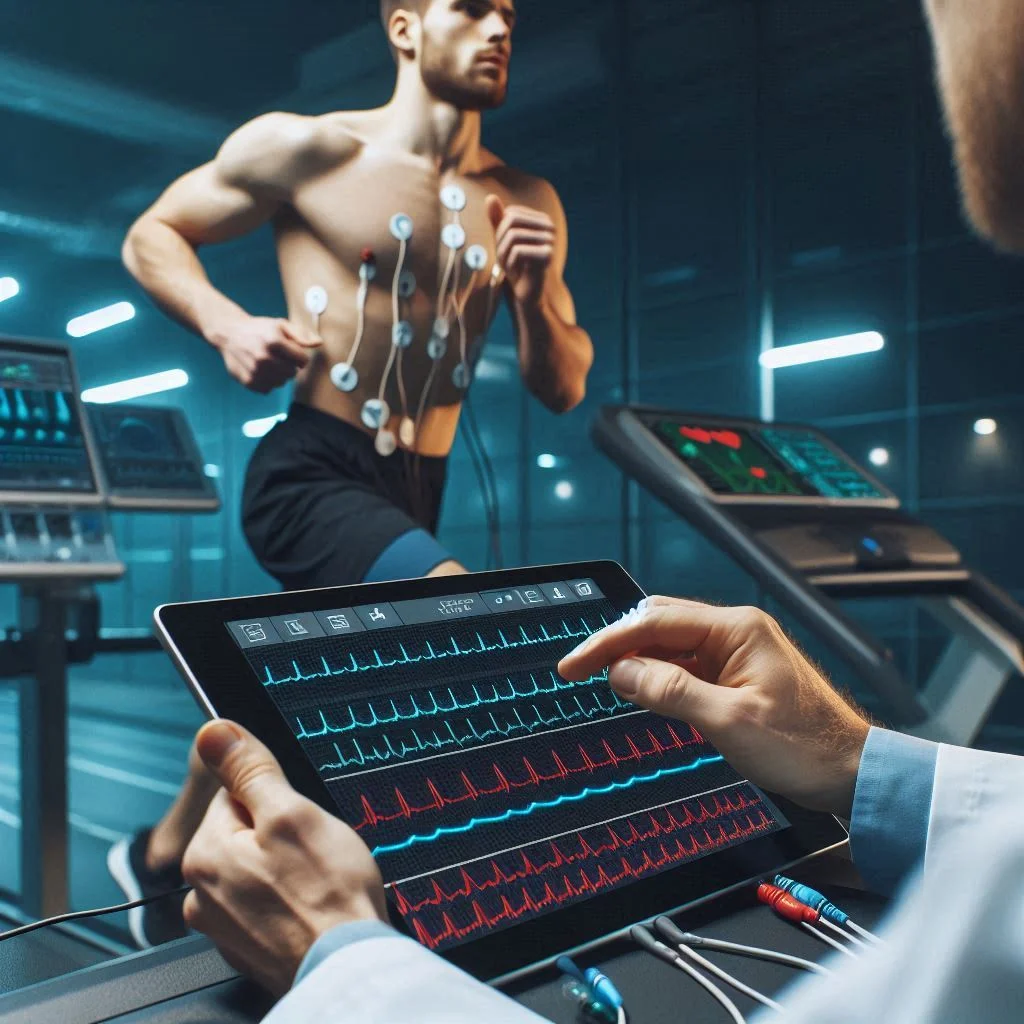Welcome to the dynamic world where science meets sports! Imagine stepping into a realm powered by cutting-edge technology, all designed to push athletes beyond their limits. This is precisely what sports technology labs embody. These innovative spaces are revolutionizing how we approach training, performance analysis, and injury rehabilitation. As we dive deeper into this fascinating topic, you’ll discover just how these labs are shaping the future of athletics and transforming everyday athletes into champions. Buckle up as we explore the evolution of sports technology and uncover its profound impact on those who dare to compete at any level!
The Evolution of Sports Technology
The evolution of sports technology has been a remarkable journey. It began centuries ago, with rudimentary tools aiding athletes in their training and performance.
In the early days, innovations were simple yet effective. Think of the first leather balls or wooden racquets—these items laid the groundwork for modern sports equipment.
As time progressed, technology became more advanced. The introduction of materials like carbon fiber transformed gear into lighter, more durable options.
Fast forward to recent years; we see sophisticated data analytics and biomechanical assessments driving performance insights. These developments have redefined how athletes train and compete.
Today’s landscape is dominated by cutting-edge wearable devices that track metrics in real-time. Virtual reality environments offer immersive training experiences, pushing the boundaries of what athletes can achieve on varying platforms.
A. Early History
The roots of sports technology can be traced back to ancient civilizations. Early athletes relied on rudimentary tools and techniques to enhance their performance. The Greeks, for instance, utilized basic measurement devices for track events in the Olympics.
As time progressed, the industrial era brought significant advancements. In the late 19th century, sports started embracing scientific principles. Coaches began experimenting with training regimens based on physiological data.
Innovations like stopwatch technology changed how competitions were timed and analyzed. This marked a turning point where empirical observation met athletic pursuit.
By incorporating early forms of biomechanics, trainers gained insights into movement efficiency. Such developments laid the groundwork for modern sports science as we know it today. These pioneering efforts opened doors that would eventually lead to sophisticated labs dedicated solely to research and athlete development.
B. Recent Advancements
Recent advancements in sports technology labs have transformed the way athletes train and perform. Cutting-edge wearable devices now track metrics like heart rate, movement patterns, and even sleep quality. These insights are invaluable for optimizing performance.
Additionally, artificial intelligence plays a crucial role in analyzing data collected during training sessions. Coaches can use this information to develop personalized training plans that cater to each athlete’s unique needs.
Another exciting development is the rise of advanced biomechanics analysis tools. High-speed cameras and motion capture systems allow for detailed examination of an athlete’s movements. This level of scrutiny helps identify areas for improvement while minimizing injury risks.
Moreover, virtual reality has entered the realm of sports training, creating immersive environments for skill enhancement without physical strain on the body. Athletes can simulate game scenarios or practice techniques within a controlled setting that promotes learning and adaptation effortlessly.
How Sports Technology Labs Work
Sports technology labs are equipped with cutting-edge tools designed to analyze and enhance athletic performance. These facilities often include specialized equipment such as motion capture systems, force plates, and environmental chambers.
In these labs, athletes undergo rigorous testing protocols. They may run on treadmills while sensors track their biomechanics or engage in strength assessments using advanced machinery.
Data collection is meticulous. Trainers compile metrics like speed, agility, and endurance. This information helps identify strengths and weaknesses in an athlete’s performance.
The atmosphere is collaborative. Engineers, scientists, and coaches work together to interpret data effectively. Their goal is to tailor training regimens that meet individual needs.
These labs also focus on recovery methods by exploring the effects of nutrition and rest on athletic performance. The integration of science into sports has created a realm where innovation meets human potential.
A. Equipment and Facilities
Sports technology labs are equipped with cutting-edge tools that provide invaluable insights into athletic performance. Advanced biomechanics equipment, such as motion capture systems, tracks every movement an athlete makes. This data helps coaches fine-tune techniques for optimal efficiency.
Moreover, specialized training facilities simulate various environmental conditions. High-altitude chambers and heat acclimatization rooms prepare athletes for competition in diverse climates.
These labs also utilize sophisticated testing devices like force plates and ergometers. They measure strength, power outputs, and endurance levels with precision. This information guides personalized training regimens tailored to individual needs.
In addition to physical equipment, the ambiance of these labs plays a crucial role in enhancing focus and motivation. Interactive spaces encourage collaboration between athletes and specialists while fostering innovation in sports science research.
B. Testing and Data Collection Methods
Testing and data collection methods in sports technology labs are vital for accurate performance analysis. These labs utilize a range of tools to gather detailed metrics about an athlete’s abilities.
Motion capture systems are among the most sophisticated technologies used. They track movements with high precision, allowing coaches to analyze biomechanics effectively. This information helps identify strengths and weaknesses in an athlete’s form.
Wearable sensors also play a crucial role in data gathering. From heart rate monitors to GPS trackers, these devices provide real-time feedback on various physiological parameters during training sessions or competitions.
Lab environments often employ force plates as well. These measure ground reaction forces when athletes jump or sprint, offering insights into power output and efficiency.
Data collected goes through rigorous analysis using advanced software. This process ensures that every detail is scrutinized, enabling tailored training programs designed to optimize performance and reduce injury risks.
Impact of Sports Technology on Athletes
Sports technology has revolutionized how athletes train and compete. It offers tools that enable a deeper understanding of performance metrics. This data helps athletes identify their strengths and weaknesses more accurately.
Through advanced analytics, athletes can fine-tune their techniques. They receive real-time feedback on everything from speed to stamina. This information transforms training sessions into targeted improvement opportunities.
Injury prevention is another significant benefit. Wearable devices monitor physical stress and fatigue levels, allowing for timely interventions before injuries occur. Athletes can adjust their routines based on these insights, promoting longevity in their careers.
Moreover, rehabilitation processes are enhanced through technology. Virtual simulations and specialized equipment create customized recovery plans tailored to individual needs. With these innovations, returning to peak performance becomes not only achievable but more efficient as well.
A. Performance Enhancement
Performance enhancement in sports has taken on a new dimension with the advent of technology. Athletes are no longer relying solely on traditional training methods. Instead, they harness data-driven insights to push their limits.
Sports technology labs play a crucial role here. They provide athletes with tailored analysis of their strengths and weaknesses. From biomechanics to physiological metrics, every detail is scrutinized for optimal performance.
Wearable devices track real-time stats during practice sessions and competitions. This instant feedback allows athletes to adjust techniques immediately, fine-tuning skills as they go along.
Moreover, advanced analytics help coaches devise strategies based on comprehensive data patterns. The combination of human instinct and technological precision creates an edge that was previously unattainable.
As these technologies evolve, so does the potential for enhancing athletic capabilities beyond what we once thought possible. Each breakthrough opens up new pathways for achieving peak performance consistently.
B. Injury Prevention and Rehabilitation
Injuries can be a devastating setback for athletes. Sports technology labs play a crucial role in mitigating these risks through advanced research and development.
By utilizing cutting-edge equipment, professionals analyze biomechanics to identify stress points during physical activity. This information helps refine training techniques and prevent potential injuries before they occur.
Rehabilitation is another essential focus of these labs. Personalized recovery programs are designed using data collected on an athlete’s specific injury patterns. This approach ensures targeted therapies that speed up healing while maintaining performance levels.
Wearable devices track real-time movements and physiological responses, offering valuable insights during both training and rehabilitation phases. With this precise feedback, athletes can adapt their routines effectively to avoid re-injury.
The integration of virtual simulations also aids in mental preparation for returning to the field after an injury, allowing athletes to regain confidence as they transition back into competitive environments.
Examples of Innovative Sports Technology
Innovative sports technology has revolutionized the way athletes train and compete. Wearable devices, for instance, have become essential tools for monitoring performance metrics in real time. From heart rate variability to GPS tracking, these gadgets provide insights that enable athletes to optimize their training regimens.
Virtual reality training is another groundbreaking advancement. It immerses athletes in simulated environments where they can practice skills without physical limitations. This technology enhances decision-making abilities and reaction times under pressure.
Smart clothing is gaining traction as well. Equipped with sensors, these garments track biometric data like muscle strain and sweat levels. This information helps coaches tailor workouts for individual needs.
Artificial intelligence plays a pivotal role in analyzing game strategies. By processing vast amounts of data from previous matches, AI can suggest tactical adjustments that give teams an edge on the field.
A. Wearable Devices
Wearable devices have revolutionized the way athletes train and compete. These gadgets provide real-time data that can be crucial for performance optimization.
From smartwatches to heart rate monitors, athletes can track their vital statistics during workouts. This information helps in understanding body responses under different conditions.
Moreover, wearables often include GPS capabilities. This feature allows athletes to analyze distance covered and pace during runs or cycling sessions. It’s a game-changer for anyone serious about improving their endurance.
Some advanced models even offer biometric feedback. Metrics like oxygen levels and sweat composition can guide training adjustments, helping prevent overexertion.
The integration of mobile apps enhances usability too. Athletes can monitor their progress effortlessly while receiving personalized coaching tips based on collected data.
As technology continues to evolve, so will these devices, promising even more insights into athletic performance and health management.
B. Virtual Reality Training
Virtual reality training is revolutionizing how athletes prepare for competition. By immersing them in a simulated environment, it enhances their skills without the physical risks associated with traditional methods.
Athletes can practice complex scenarios repeatedly. This repetition helps build muscle memory and mental resilience. They can face virtual opponents or navigate challenging courses that mimic real-life conditions.
Furthermore, VR allows coaches to analyze performance in real-time. Data collected during these sessions reveals insights into an athlete’s strengths and weaknesses. Adjustments can be made instantly, optimizing training regimens.
The technology transcends sports boundaries too. From football to gymnastics, various disciplines are harnessing its potential. As VR continues to evolve, so will its applications in enhancing athletic prowess and strategy development.
Eth
Sports technology labs represent the cutting-edge intersection of science and athletics. They are vital in shaping the future of sports by providing athletes with tools to enhance performance while minimizing risks. As we delve deeper into this evolving field, ethical considerations will play a significant role.
The implementation of advanced technologies raises questions about fairness and access. Are some athletes gaining an unfair advantage due to superior resources? Balancing innovation with equity remains a challenge.
Moreover, as data collection becomes more prevalent, privacy concerns also emerge. Athletes must trust that their information is handled responsibly. Transparency is essential to maintain integrity within the sport.
As these labs continue to pioneer new methods for training and rehabilitation, they must do so with an eye toward inclusivity and ethics. The potential benefits are immense, but it’s crucial that all stakeholders navigate carefully through this complex landscape to ensure that sports remain competitive yet fair for everyone involved.
In embracing these advancements, society can look forward to a future where sports technology not only elevates athletic performance but also upholds the values of respect and fairness at its core.







